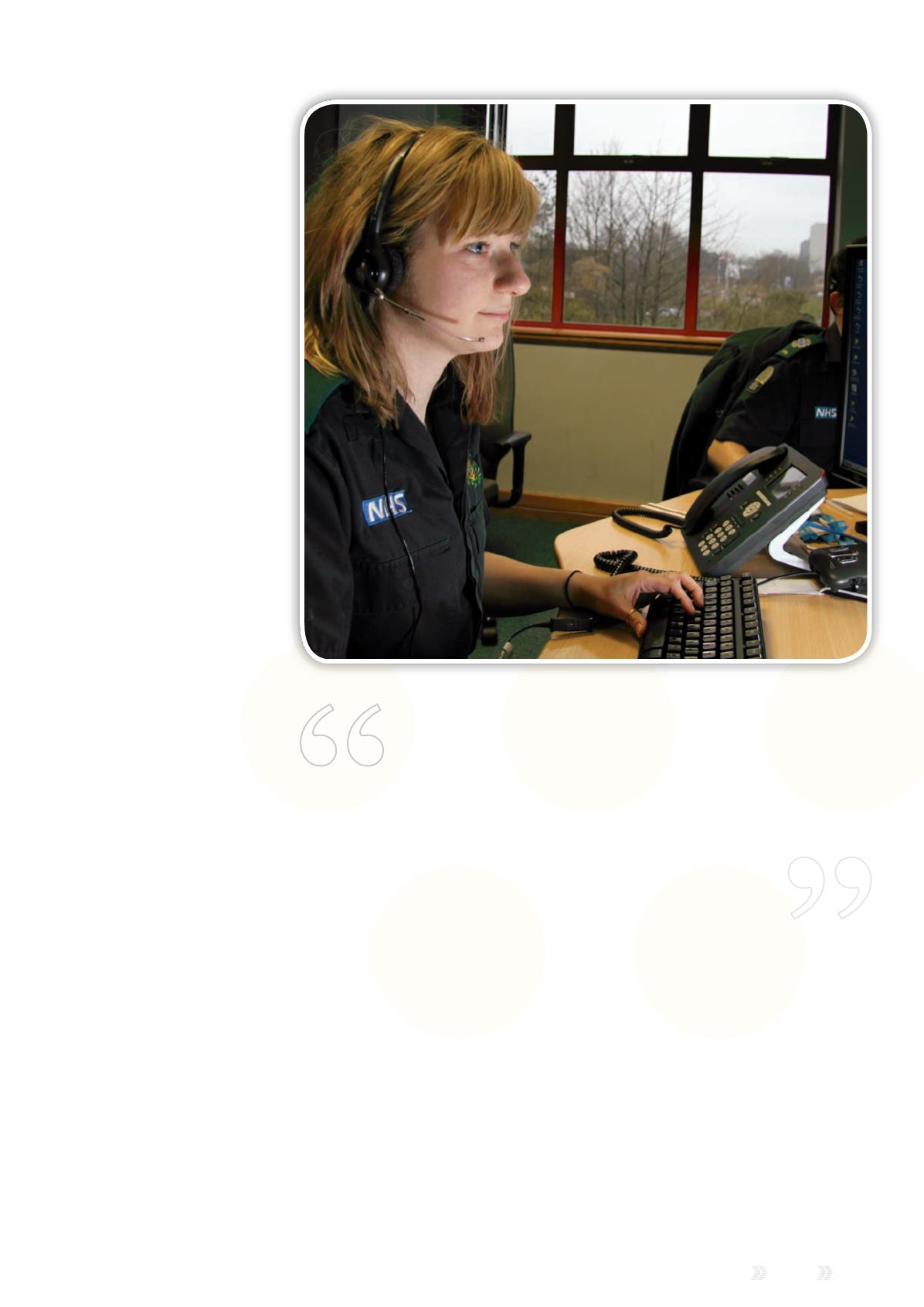
Reach
Issue 6 2014
|
21
The Trust is taking this opportunity to take our
users’ feedback from the EUE sessions, and make
changes where they are required.
Steve Smith, Operations Lead, Airwave Communications,
for South Western Ambulance Service NHS Foundation Trust
A
new single Ambulance
Service serving the entire
south-west of England
was created when the enlarged
South Western Ambulance
Service NHS Foundation Trust
(SWASFT) came into existence
following its acquisition of
neighbouring Great Western
Ambulance Service (GWAS).
In addition to Devon, Dorset,
Somerset, Cornwall and the Isles of
Scilly, the area covered by SWASFT
now includes Gloucestershire,
Wiltshire and the former Avon.
Reach has previously reported on
the Airwave End User Engagement
(EUE) programme undertaken by
GWAS prior to the acquisition. Its
success led to a series of EUE
sessions being implemented
for SWASFT staff, led by Steve
Smith, Operations Lead, Airwave
Communications, for SWASFT.
Steve is the link between the
operational users of the Airwave
Service – he is one himself – and the
technical teams within the Trust and
within Airwave.
“I look at requirements and request
technical changes or upgrades if
required. It’s my job to look at how
we’re using the Airwave Service, are
we using it properly, and if not, why
not?” said Steve.
The EUE programme was run
over four weeks, with the Airwave
team visiting stations across Dorset,
Somerset, Devon and Cornwall. The
informal sessions were promoted via
the Trust’s internal newsletter, emails
and posters, and on the days that
the EUE team was at a particular
location, the Trust used its mobile
data system to send bulletins to the
all the Trust’s vehicles in the area to
encourage attendance.
“The feedback from the EUE
sessions showed us that our staff did
not know enough about how to use
the Airwave Service and that more
training was required. Therefore we
are preparing a paper that will form
the basis of a review of the Trust’s
training needs with regard to the
Airwave Service, for both existing
and new users.” said Steve.
“We have a diverse group of
users that includes ambulance
care assistants, emergency care
assistants, student paramedics,
urgent care service drivers,
dispatchers, supervisors and
operations managers, ambulance
technicians, dispatchers, the
response desk, and logistics
operators – and they all need to have
proper structured training.
“We have run a programme of
tactical awareness training, which
is provided by the Department of
Health and accredited by NARU
(National Ambulance Resilience
Unit) and JESIP (Joint Emergency
Service interoperability Programme).
We were the rst Trust to run the
programme and it aims to provide a
much better understanding for senior
and tactical ofcers of the capabilities
of the Airwave Service. The course
highlights the most efcient way
of using the Service, for people in
charge of communications at major
events or incidents.
“The Trust is taking this opportunity
to take our users’ feedback from the
EUE sessions, and make changes
where they are required. As an
example, the EUE highlighted that
users were not making full use of the
telephony features via the Airwave


